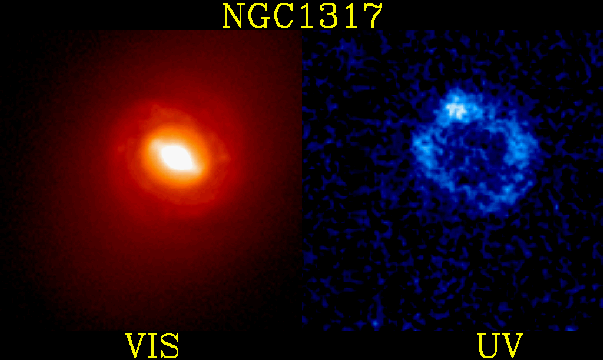Explanation: Where do stars form? A typical place is an area of dense nebular gas common to arms in spiral galaxies. Sometimes, however, a burst of star formation can occur with unusual geometry. Nearby galaxy NGC 1317 shows such an unusual ring of star formation surrounding its barred nucleus. In the above image, older stars appear more red and are more evident in the leftmost photograph in visible light. The rightmost photograph taken by the Ultraviolet Imaging Telescope is in ultraviolet and highlights stars which are younger and bluer and shows the starbirth ring. This unusual ring may be evidence of a gravitational encounter with another galaxy, causing a density wave to ripple out from the galaxy's center.
Authors & editors:
Robert Nemiroff
(MTU) &
Jerry Bonnell
(USRA)
NASA Web Site Statements, Warnings,
and Disclaimers
NASA Official: Jay Norris.
Specific
rights apply.
A service of:
LHEA at
NASA /
GSFC
& Michigan Tech. U.
Based on Astronomy Picture
Of the Day
